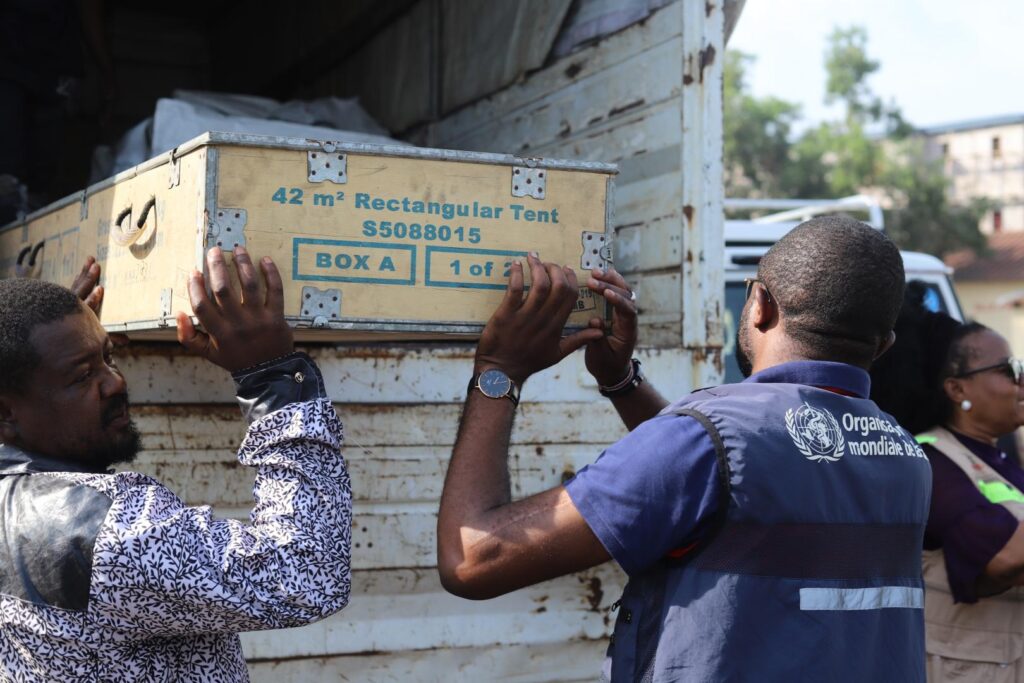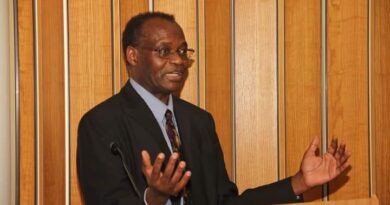DRC Authorities and WHO Step Up Support for Flood-Affected Families in Kinshasa
The Democratic Republic of the Congo (DRC), in partnership with the World Health Organization (WHO) and other humanitarian actors, is intensifying efforts to support thousands of people affected by the devastating floods that struck Kinshasa and other major cities in April 2025.
Among those impacted is Salima, a mother of four who fled violence in the eastern provinces seeking refuge in Kinshasa, only to face disaster once more. “A few days after I arrived, the rains caught us by surprise. We lost everything,” she recalled. Her story mirrors the struggles of more than 10,000 people displaced by the floods, over 5,000 of whom remain at a temporary relocation site in Kinkole, established by the government.
The joint response, spearheaded by WHO’s SURGE system—a mechanism for emergency preparedness and response—ensured that essential health services reached affected populations quickly. Ambulances were deployed, and a care unit was established within 24 hours, providing life-saving interventions, including referrals for pregnant women and patients requiring urgent attention.
“We helped set up a care unit with the minimum resources needed to relieve the population,” said Dr Guy Kalambayi, WHO’s Emergency Preparedness and Response Officer in DRC. “Our responsiveness was greatly appreciated by the communities, both in terms of addressing their immediate needs and safeguarding their health.”
WHO and health authorities jointly conducted public health analyses, ensured the provision of safe drinking water, and distributed emergency medical supplies sufficient to cover the needs of 10,000 people for three months. Additionally, four emergency tents were delivered to support temporary shelter needs.
Nationwide, the April floods affected over 1.5 million people, damaging more than 200 schools, 100 health centres, homes, and local markets. Efforts to restore critical infrastructure and deliver humanitarian aid continue, with a special focus on vulnerable groups such as the elderly, children, pregnant women, and those with chronic conditions or disabilities.
Albertine, a medical student who was also displaced, commended the response. “We needed safe shelter, water and food. That’s what we received, not to mention the care we received with free medicines,” she said.
Dr Emilia Sana, Flood Incident Manager at the Ministry of Public Health, Hygiene and Social Welfare, described the response as a pivotal moment. “This marks a turning point towards a more effective multisectoral framework for our efforts, bringing key ministries together at the highest level,” she said.
The authorities, supported by WHO, are also reinforcing community-based disease surveillance systems and sanitation measures to prevent potential outbreaks, especially in overcrowded shelters.
Despite ongoing challenges, the mood among survivors remains resilient. “We may have lost all our material possessions, but we are still alive and in good health. That’s what matters,” Salima said.
The DRC remains vulnerable to climate-related disasters. As recently as June, off-season rains killed at least 29 people in three Kinshasa districts and affected over 500 households—a stark reminder of the urgency for continued investment in climate resilience and disaster preparedness.



